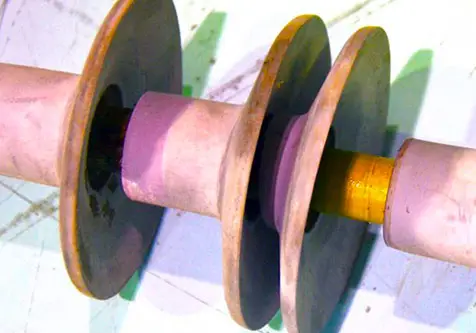IEC:Housing Adhesion Problem in Polymeric Line Insulators not sufficiently defined
The existing IEC doesn’t succficiently reveal the potential adhesion problems in polymeric line insulators.

The existing IEC doesn’t succficiently reveal the potential adhesion problems in polymeric line insulators.

Algeria, a country covering 2,381,741 square km in Africa, and the largest nation in Africa too, is seeking the opportunity of development in the electricity industry. With the rapid growth of demand for electricity, some merchants smell the potential fortune in self-supplying electrical components, such as high voltage polymeric insulators. In recent years, more and […]
Insulators are important items in electrical power lines, they are widely used in all circuits and electrical or electronic systems to isolate electricity between two conductive materials. What we talk about today are polymer insulators and porcelain insulators applied on high voltage overhead lines. What’s the difference between polymer insulators and porcelain insulators? First of […]
The thermal-mechanical test is one of the most significant tests for composite insulators. Here we have a partial section of International Standard IEC 61109 2008: Insulators for overhead lines – Composite suspension and tension insulators for a.c. systems with a nominal voltage greater than 1 000 V – Definitions, test methods, and acceptance criteria. IEC […]
Polymer insulators are important electrical items in electrical power overhead transmission, distribution, and substation lines. They provide reliable insulation between cables and iron towers, or between conductors and connecting fittings like clamps so that the electricity can be transmitted safely. With the global growth of the electrical industry, more and more people smell the potential […]
What is a composite insulator? The composite insulator is also called the polymeric insulator. It is developed after toughened glass insulator and ceramic insulators, whose main insulation structure is consists of a fiberglass core (rod) and silicon housing and sheds. One both sides, 2 metallic fittings are installed on each side with crimping technics. These […]
Africa has been dreaming about establishing its own factory of high voltage polymeric insulators since long ago, and this year their dream come true. The first manufacturer of 33kV silicon rubber insulator (polymeric insulator) is now moving its pace steadily to real production. This is not only a start but also a milestone for Tanzanian […]
Last time we talked about sample test of silicone composite insulator for AC system above 1KV, the IEC 61109:2008 has defined it clearly. Today let’s the coming section”routine test” of polymeric insulator in this IEC 61109: 13 Routine tests 13.1 Mechanical routine test Every insulator shall withstand, at ambient temperature, a tensile load at RTL […]
Sample test is a major method of insulator acceptance inspection for mass production. It is widely used by inspectors of insulators from manufacturers, power girds and electrical laboratories. Here we have definition, rules, test method and acceptance criteria of composite insulator of suspension type and tension type of international standard IEC 61109:2008 “spension and tension […]
After end fittings of HV insulators have been crimped onto the core by crimping machine, the entire electrical insulators are supposed to be able to bear certain specific mechanical load as they will be used on overhead lines to support conductors and other line fittings. Here let’s see how international standard IEC 61109 defines such […]
